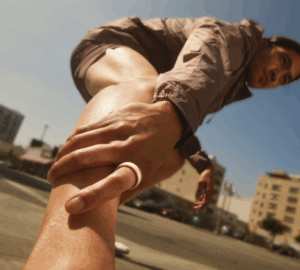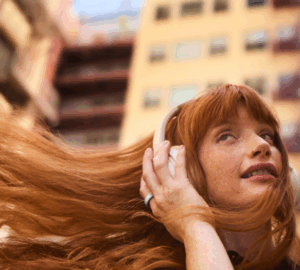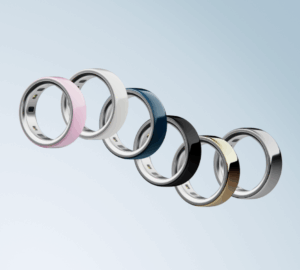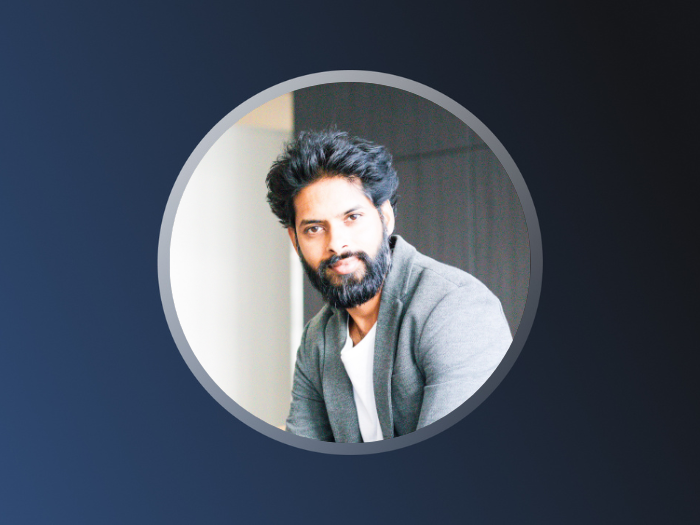Who: Kaushik Ram, PhD, 39, Australia
Surprising Oura insight: Ram found that when he exercises, his HRV is higher the following day. When his HRV is high, his Readiness Score is better, even if he hasn’t slept well.
For the past two decades, neuroscientist and author Kaushik Ram, PhD, has been researching the parasympathetic nervous system. “Many people have disconnected their minds from their bodies,” Ram explains, which can be reflected in how their nervous system functions and the likelihood of experiencing psychiatric conditions like depression and anxiety.
While at the University of Sydney, Ram studied the vagus nerve. The vagus nerves are the main components of the parasympathetic nervous system (the autonomic system that controls “rest-and-digest” functions like digestion). He found that vagal tone (the level of activity in this nerve) was the most accurate biomarker for evaluating neurological and mental health and overall well-being. And the best way to test for vagal tone? By measuring heart rate variability (HRV).
Ram’s interest in neuroscience began in childhood. “I was experiencing constant headaches, so much so that I had to take acetaminophen most nights to ease the pain so I could sleep.” After being introduced to the concept of stillness through the book The Power of Now by Eckhart Tolle, his headaches vanished. This led him to pursue neuroscience to better understand the brain-body connection.
“It’s ironic to say this as a neuroscientist, but it’s not so much about the brain – mental health and performance begins in the body,” Ram says.
In his continued effort to teach people how to improve their vagal tone and mind-body connection, he conducted an experiment to see which mindfulness practice is best for improving vagal tone, using Oura Ring to measure HRV during different types of breathwork.
READ MORE: What Is the Average HRV?
What brought you to Oura? What are some of your favorite features?
I wanted a medical-grade device that could record my heart rate variability (HRV) without haptic feedback or interference. I was skeptical about the accuracy of Oura Ring, but I compared it to an ECG and was impressed that it was near medical grade. Plus, it’s simple, elegant, and passed off as jewelry.
In the morning I check my Readiness Score and it helps me gauge how my day will look – if my Readiness is low, I won’t push too hard. In fact, the only notifications I have allowed on my phone are text messages and Oura!
Ultimately, I’ve spent a lot of time researching the body and the brain, and Oura has brought this research to light, specifically how connected sleep, movement, and HRV are.
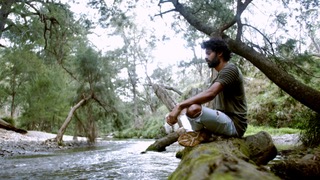
How does sleep affect HRV?
Sleep is an important factor that contributes to HRV—specifically, the amount of time you spend in deep sleep, which is linked to the parasympathetic nervous system. If you’re stressed and your fight-or-flight response is activated, you’ll probably have lower amounts of deep sleep.
Deep sleep is critical for brain health: it’s where the cerebral spinal fluid and accumulation of toxins are flushed out and replaced. This is important because otherwise, beta-amyloids can accumulate, which can cause dementia.
READ MORE: Deep Sleep: What Is It and How to Get More
Tell us about your experiment with HRV and Oura.
Deep breathing! Many people are shallow breathers, which affects the nervous system. I conducted an experiment on myself to see which breathing technique was most effective for heart rate recovery – how quickly your heart rate comes back down to baseline.
The three techniques I did included:
- Mindfulness – A 10-minute Unguided Session on the Oura App.
- 21 Breaths – An eight-minute-long guided breathwork found on the Oura App.
- Vagal Breathing – Deep, slow, diaphragmatic breathing in through the nose, out through the mouth, for 15 minutes from my program.
I compared these methods to a benchmark (shown below as “no meditation”); for this I simply sat and breathed normally.
It was evident that vagal breathing was best for me because it led to the fastest deceleration in heart rate. When you breathe like this constantly, you train your autonomic nervous system to be responsive – when a stressful situation occurs, you can quickly come back down to a relaxed state.
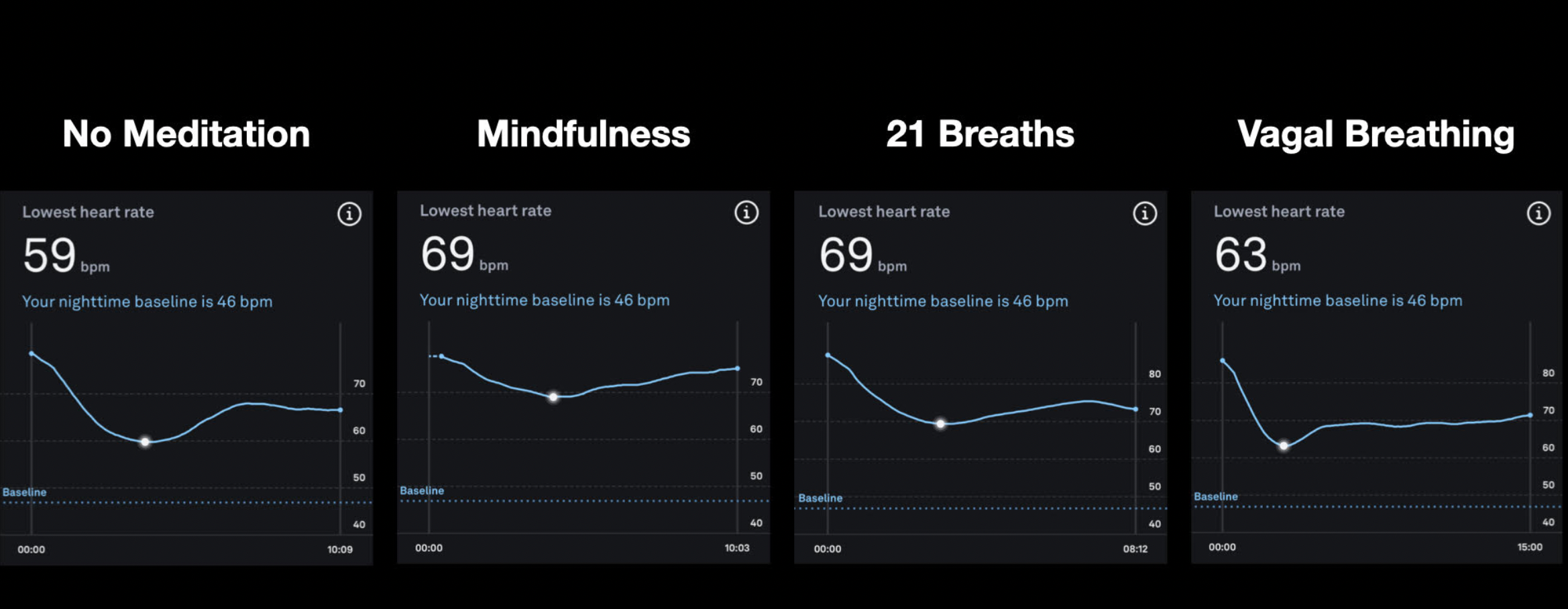
Vagal breathing caused the fastest deceleration in heart rate and it remained steady throughout the rest of the meditation. This means that it can improve HRV over time because it allows your nervous system to be more responsive to stress or activity.
Another effective, underutilized way to improve HRV is by working on your tactile sensitivity. For example, many of us wear very cushioned shoes so we are depriving our body access to information about the terrain compared to being bare-footed. Most people have disassociated with their bodies, so by intentionally becoming receptive to our senses, it enhances the brain-body connection and increases HRV.
How did Oura help you understand the relationship between exercise and HRV?
I use the Tag feature to log all of my workouts and the Trend view to see how workouts are affecting my HRV and sleep. I’ve noticed that when I exercise, my HRV is higher. When my HRV is high, my Readiness Score is better the following day, even if I didn’t sleep great!
My research has shown that when people exercise intensely or in a fight-or-flight sympathetic state, it actually lowers their HRV. Often, people think doing low-intensity exercise, like yoga means you’re in a parasympathetic state, and vigorous exercise, like lifting weights, means your sympathetic nervous system is activated. But actually, you can train your nervous system to relax and connect to your body in all types of movement.
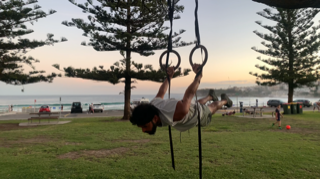
For instance, during my PhD, I was doing Capoeira for three hours a day, six days a week. Despite the high output of exercise, it improved my HRV because during the exercise I focused on deep breathing that stimulates the nervous system (known as vagal breathing) to stay in a parasympathetic state. I have gone on to teach these techniques in workshops for hundreds of people.
READ MORE: 10 Simple Breathing Exercises for Relaxation
What’s Your Oura Story?
Everyone’s story is unique, and we’d love to hear yours. Share your story here.






